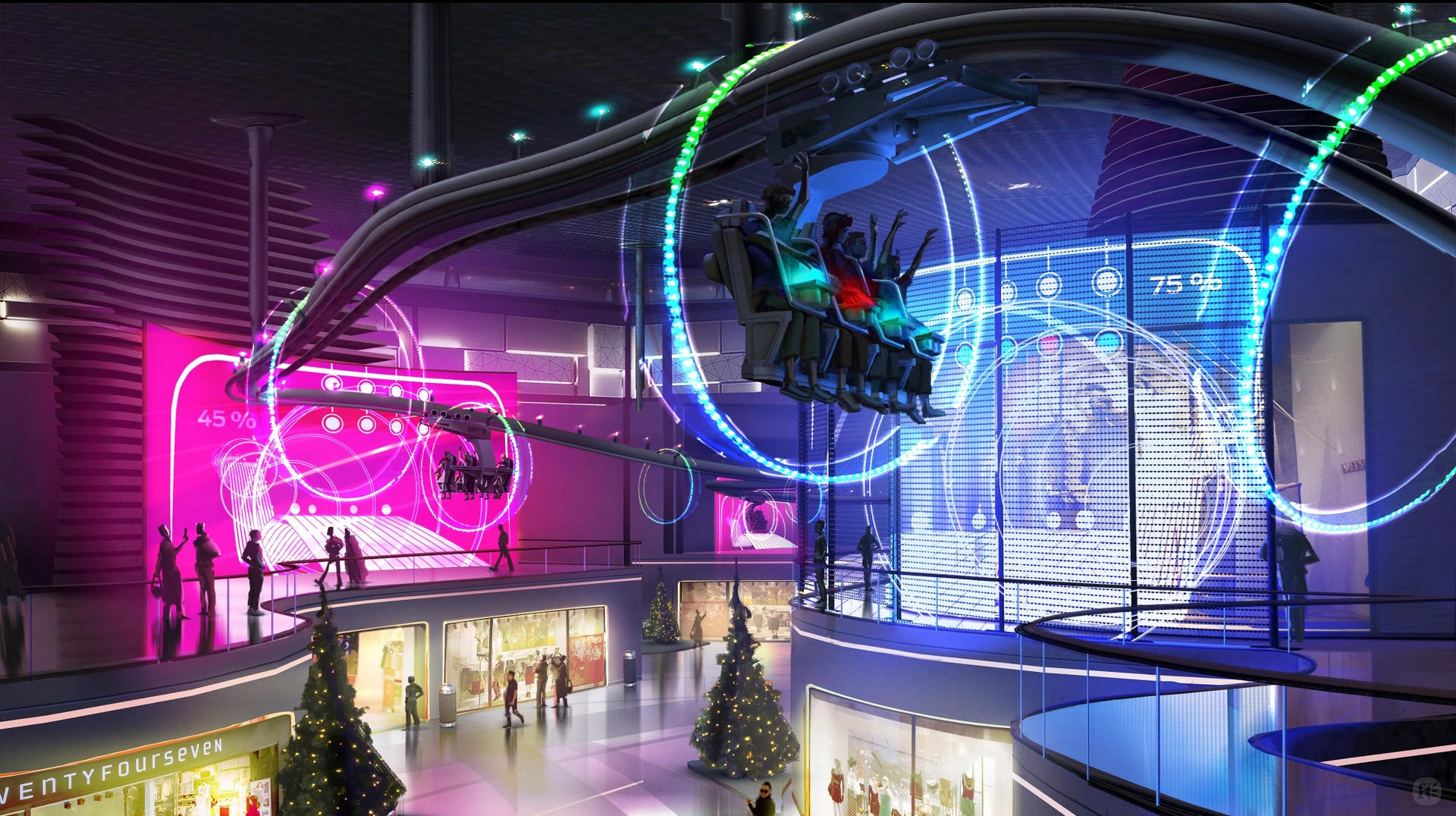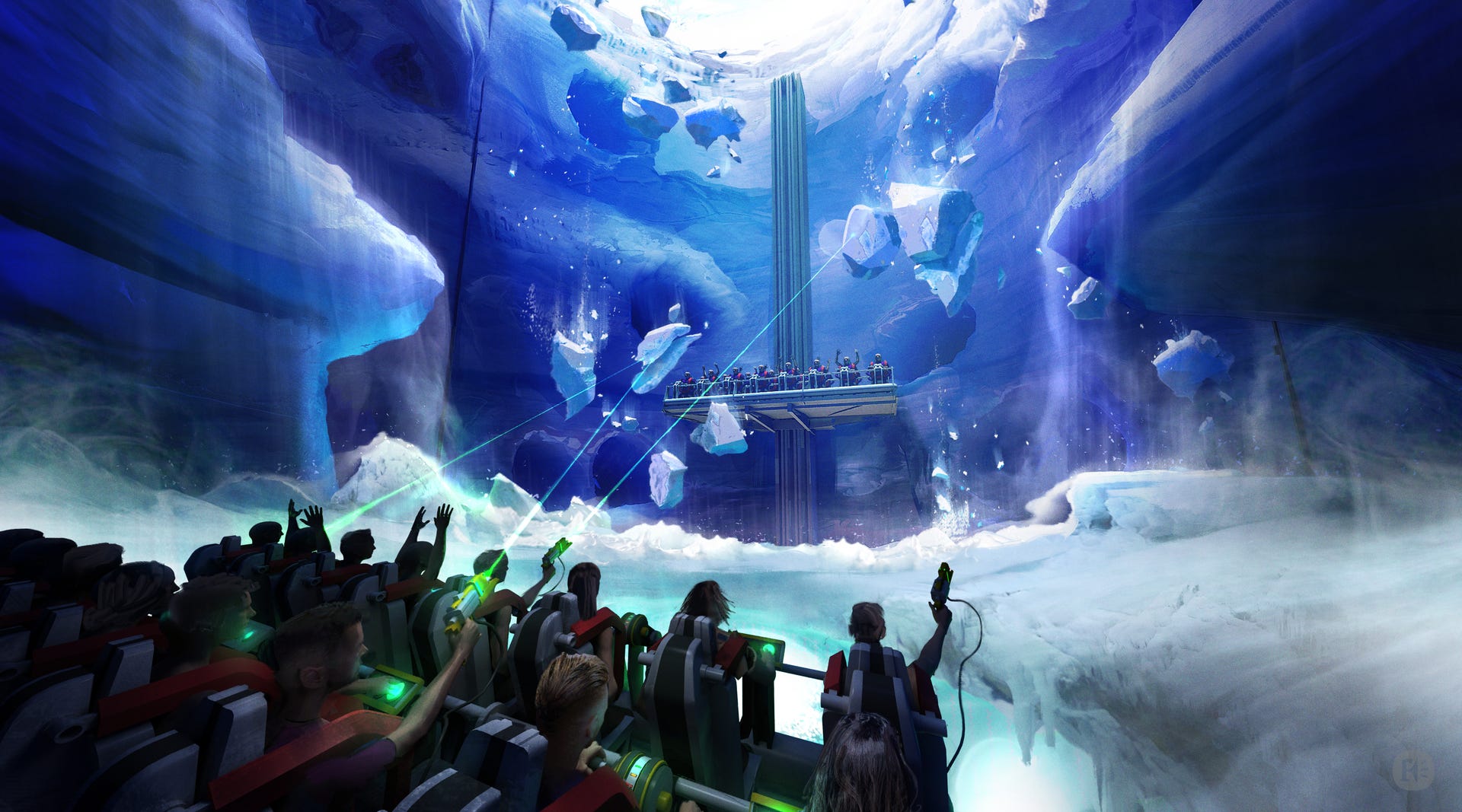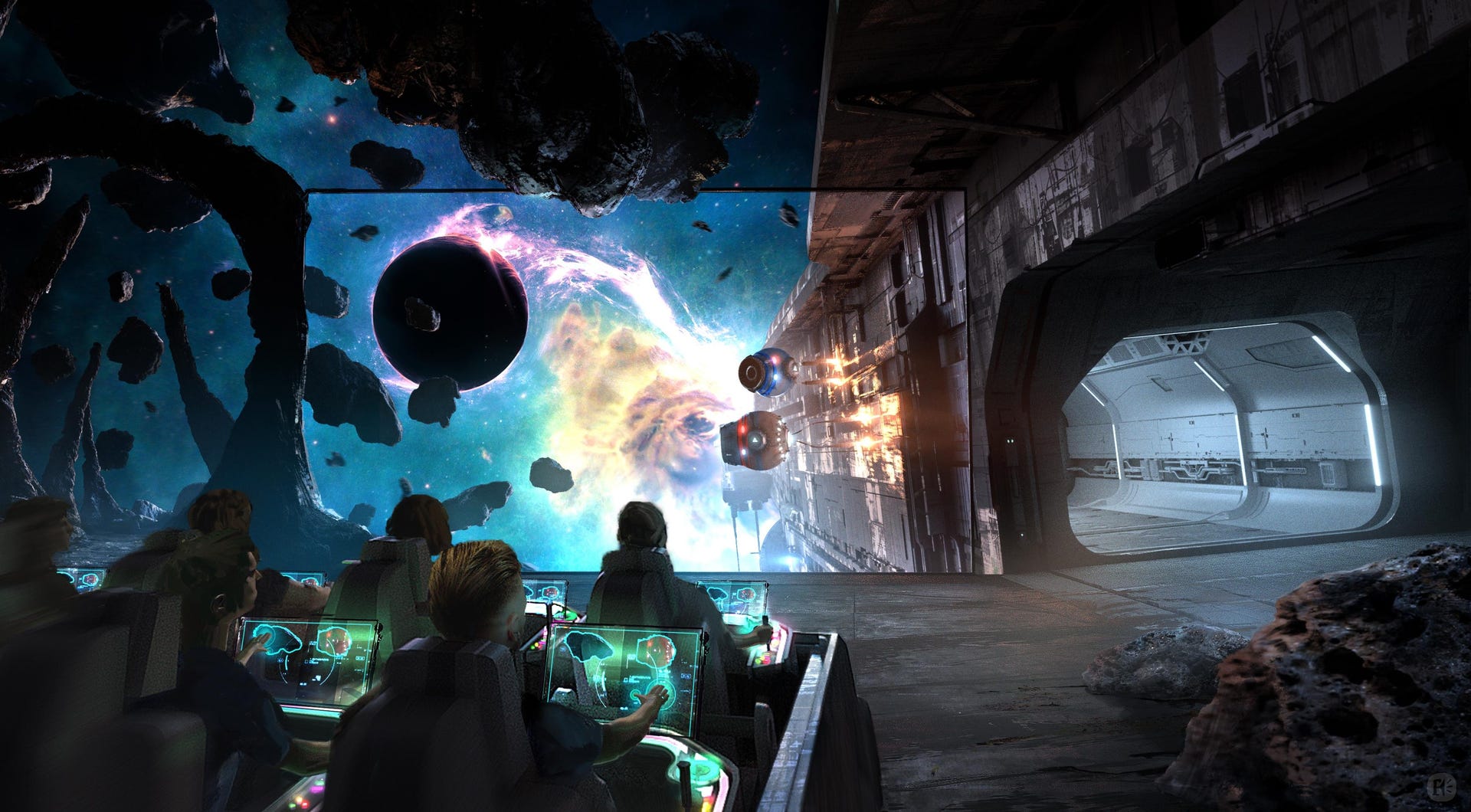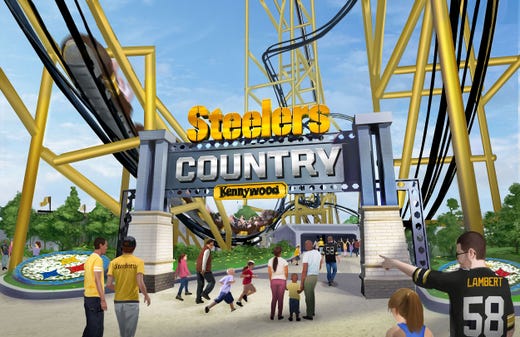5 December, 2018

Arthur Levine, Special to USA TODAY
Those who want to know what’s happening now in themed entertainment can head to Orlando, Florida, and visit its world-class theme parks. Those who want to know what might be in store for parks in the future head to Orlando each fall and visit the International Association of Amusement Parks and Attractions Expo. If this year’s event is any indication, expect to see a lot more interactivity in rides and attractions over the next few years.
The IAAPA Expo, held in mid-November at the Orange County Convention Center, is a massive gathering of attraction designers, ride manufacturers, suppliers, park managers, and virtually everybody else involved in the themed entertainment industry across the globe. How massive? A record 42,000 people jammed the five-day event to peruse 1,151 companies displaying everything from full-sized, up-and-running rides to the latest attraction technology. The burgeoning industry is so red-hot, the expo has outgrown the convention center, one of the largest in the nation. An overflow of exhibitors set up booths in new, custom-built structures erected in the parking lot.
Mickey the disrupter
The biggest news in the theme park world (galaxy?) for 2019 will be the opening of the Star Wars lands coming to Disneyland in California and Disney’s Hollywood Studios in Florida. Bob Chapek, chairman of Disney Parks, Experiences, and Consumer Products, was a keynote speaker at the expo and said that the highly anticipated lands will defy definition and interactivity will be a key component.
He shared renderings of one of the attractions in which guests will play hands-on roles piloting the famed Millennium Falcon spaceship, and said that their actions would alter the outcome of the experience. Visitors to Star Wars: Galaxy’s Edge, as Disney is branding the lands, will be “active participants in their own stories,” Chapek added.
More: How to beat Disneyland crowds before Star Wars: Galaxy’s Edge opens
Another development the Disney chair shared was that the Guardians of the Galaxy attraction now under construction at Florida’s Epcot will be a “storytelling coaster,” and will feature innovative ride vehicles that will pivot to optimally position passengers for show scenes. Chapek also said that the attraction, which will be one of the industry’s largest and longest indoor roller coasters, will have a show building so enormous, four Spaceship Earths (the signature golf ball-like dome that greets guests at the front of Epcot) could fit inside of it.
Don’t just ride, do something
Active participation was being promoted throughout the IAAPA Expo. For years, an “interactive” park ride has generally referred to an attraction in which passengers have been issued guns or other game controllers to blast targets and amass points as they move through scenes. Think Buzz Lightyear’s Space Ranger Spin or Toy Story Mania at the Disney parks. One of the industry’s leading designers of interactive dark rides, the Sally Corporation, had an impressive Big Bird animatronic character on display to promote the interactive Sesame Street attraction it is building for a 2019 debut at PortAventura Park in Salou, Spain.
Another attraction designer, Zamperla, unveiled concepts to take existing rides and make them interactive. BumpArcade gamifies bumper cars by projecting images on the floor that riders try to drive over to score points. The Galleon+ tracks gestures and screams of guests aboard swinging ship rides: Passengers are divided into two teams, and the team that best follows the prompts and performs actions such as throwing their hands up in the air or making the most noise registers the most points. The team that first reaches a point threshold could also trigger an effect, such as a fountain that would shoot water at the opposing team.

Overlaying interactivity on existing rides is intriguing, but what if passengers could interact with and exert some control over the actual ride experience? That’s the heady stuff that two companies, CAVU Designwerks and Framestore, are developing.
In one of the three “Game Changers” attractions that they have brainstormed together, passengers aboard a pair of drop-tower rides would face one another and see media projected onto a transparent screen between them. Alternately, the show building might include actual scenic elements. In either case, by using gestures or onboard controllers, riders would be able to make the opposing tower rise or lower as part of the story. Since no two experiences would be the same, the drop-tower thrills would be compounded by the uncertain outcomes.
“Passengers would actually control the ride vehicle rather than simply controlling a shooting device,” said Mark Stepanian, CAVU VP. “There is a reaction to what riders are doing, and it’s meaningful. It fits with the story.”
Similarly, the two companies dreamed up Adventure Machine, an interactive dark ride in which passengers aboard automated, trackless vehicles would be able to control the motion of the vehicles using shooters or other input devices. Their actions could also influence the order in which their vehicles move through a show building and they experience the rollout of a story.
Finally, Cavu and Framestore revealed an interactive roller coaster train that could speed up, slow down or turn depending on the actions of the riders. For example, passengers might use hand gestures to play a game similar to Guitar Hero while racing along a track. With shopping malls losing anchor stores and other tenants, the ride developers envision their interactive coasters bringing renewed energy and purpose to underutilized, indoor retail spaces.
Roller coasters never go out of style
Coasters don’t have to include interactive elements to bring energy and thrills to parks. Some of the thrill machines that will be opening in 2019 were showcased at the expo, including Tidal Twister, coming to SeaWorld San Diego in California. A lead car from one of the trains was on display as well as a model of the unique coaster. Manufactured by Skyline Attractions, the ride will feature two sets of cars that will race forward and backwards a number of times and cross over one another in the middle of a compact, horizontal, figure-8 track.
Expo attendees got to see football-inspired seats and the Pittsburgh Steelers’ distinctive black and gold colors when S&S Sansei Technologies offered a first look at the lead car for the Steel Curtain, the 220-foot-tall, 75 mph behemoth coming to the Pennsylvania amusement park, Kennywood. The coaster will be the featured attraction at Steelers Country, a new land themed to the legendary sports franchise.
More: Pittsburgh Steelers-inspired roller coaster to open at Kennywood
Instead of actual cars, attraction manufacturer Premier Rides revealed a cake in the likeness of the Tigris coaster it is creating for Busch Gardens Tampa Bay in Florida. The triple-launch ride will soar 150 feet and hit 62 mph.
Exhibitors offered a couple of tantalizing glimpses into what may be on the horizon. Premier Rides announced that it is developing an attraction that would marry a ride vehicle mounted on a robotic arm to a roller coaster chassis. The hybrid ride would have the potential to combine the fluid movements and storytelling capabilities of Universal’s robotic arm masterpiece, Harry Potter and the Forbidden Journey, with the intense thrills of a major roller coaster.
Dynamic Attractions revealed its latest concept at the expo, the Duel Power coaster. Like Disney’s Test Track and Radiator Springs Racers, the attractions would attach ride vehicles to a hidden roller coaster track. Unlike those attractions, each of the newfangled ride vehicles would include independent motion-platform bases and their own onboard power supplies. The Duel Power coaster would be able to feature bursts of speed, stop on a dime, and even back up. It would give designers the ability to incorporate high-speed action in a rich storytelling environment.
“[The ride vehicles] could drift to the side, do a 360-degree spinout, or simulate leaping over a broken bridge,” said John Kageorge, communications director for Dynamic Attractions. “These are things that have never happened before on a coaster.”
VR virtually everywhere
As has been the case the last few years at the IAAPA Expo, attendees couldn’t wander too far on the exhibit floor without encountering a company pitching its version of a virtual reality attraction. Perhaps the most intriguing new application of the technology on display was ParadropVR from Simworx. It simulates skydiving and incorporates interactivity into the experience.
“The agency is with the individual,” explains Terry Monkton, chief executive officer of Simworx. “You have full control as you fly around the sky. We’re taking people to places they couldn’t go without years of experience.”
Passengers strap on VR goggles that give them 360-degree views of airborne vistas and sit in ride vehicles that they can gently maneuver up or down about 10 feet (but feel as if they are ascending or diving much more than that in the virtual world). Fans blow air to enhance the illusion of flight. The action was a tad jerky, and the graphics weren’t totally convincing, but the experience was enjoyable and captivating.
Legoland Florida will be taking visitors airborne when it opens the Lego Movie Masters of Flight ride in early spring of 2019. It will be part of a new Lego Movie World land that will bring the quirky characters from the popular and wildly funny films to life. Along with ride manufacturer Brogent Technologies, Legoland revealed a model of the flying theater attraction (made out of Lego blocks!) and shared a clip of Nick Offerman doing the voice-overs for his wacky character, Metalbeard, that will be included in the attraction.
Interactivity extends beyond ride experiences. Park visitors want to have control over how long they will wait in lines, how they can order their meals, how they can access on-ride photos, and other practical matters. The major parks have robust apps and online tools they have developed, such as Disney’s Fastpass program, to help guests plan and enjoy their visits. “Even small parks want to seamlessly integrate digital experiences,” says Paul Noland, CEO of accesso. His company announced a suite of products at the expo that would enable parks of all sizes to offer the same electronic amenities as the big players.
As always, there were some unusual sights to behold on the expo floor. Sansei Technologies demonstrated J-Deite, a prototype of an actual, full-sized car that converts into a larger-than-life robot. While kids would go bonkers for the transforming robot, for sheer spectacle, I2K Inflatables had it beat. It displayed a much-larger-than-life bounce house made to look like a poo emoji. Fortunately, it did not come with a scent cannon.
Article first appeared on USA Today


